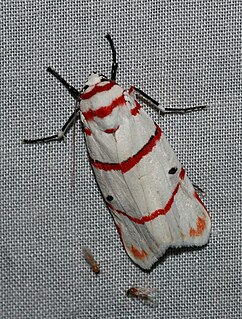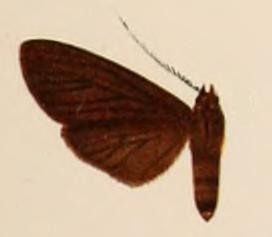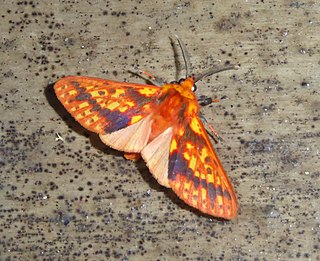
Autochloris is a genus of moths in the subfamily Arctiinae.

Cyana is a genus of moths in the family Erebidae. Species are well distributed in Africa, Madagascar, China, India, Sri Lanka, Myanmar, Sumatra, Java and Borneo. The genus was erected by Francis Walker in 1854.
Haemanota is a genus of moths in the family Erebidae. The genus was erected by George Hampson in 1901.

Idalus is a genus of moths in the family Erebidae. The genus was erected by Francis Walker in 1855.

Leucanopsis is a genus of moths in the family Erebidae. The genus was described by Alfredo Rei do Régo Barros in 1956.

Melese is a genus of moths in the family Erebidae. The genus was erected by Francis Walker in 1854.

Pelochyta is a genus of moths in the family Erebidae. The species was first described by Jacob Hübner in 1819. They are distributed in Africa, throughout India, Myanmar, Sri Lanka, Australia and New Britain.
Pseudalus is a genus of moths in the subfamily Arctiinae. The genus was described by Schaus in 1896.
Zatrephes is a genus of moths in the family Erebidae. The genus was erected by Jacob Hübner in 1819. It was formerly considered part of the Arctiidae. It includes the former genus Ennomomima, which is now considered a synonym.

Symphlebia is a genus of moths in the family Erebidae. The genus was erected by Felder in 1874.

Trichromia is a genus of moths in the family Erebidae erected by Jacob Hübner in 1819. The members of this genus are largely indigenous to South America.

Lophocampa distincta, is a moth of the family Erebidae. It was described by Walter Rothschild in 1910. It is found in Peru, Brazil, Argentina, Colombia and Ecuador.

Aemilia ockendeni is a moth of the family Erebidae first described by Walter Rothschild in 1909. It is found in Peru and Bolivia.

Diospage steinbachi is a moth of the subfamily Arctiinae first described by Rothschild in 1909. It is found in Bolivia.

Diospage engelkei is a moth of the subfamily Arctiinae first described by Rothschild in 1909. It is found in South America.
Ammalo violitincta is a moth of the family Erebidae first described by Walter Rothschild in 1922. It is found in Brazil.

Stenoglene is a genus of moths in the family Eupterotidae from Africa. The genus was described by Felder in 1874.
Diospage carilla is a moth of the subfamily Arctiinae. It was described by Schaus in 1910. It is found in Costa Rica.
Diospage semimarginata is a moth of the subfamily Arctiinae. It was described by Rothschild in 1909. It is found in Ecuador.
Teulisna chiloides is a moth in the family Erebidae. It was described by Francis Walker in 1862. It is found on Peninsular Malaysia, Sumatra, Borneo, Sulawesi and Sumbawa. It has also been recorded from Queensland, Australia. The habitat consists of lowland dipterocarp forests, alluvial forests and lower montane forests.










